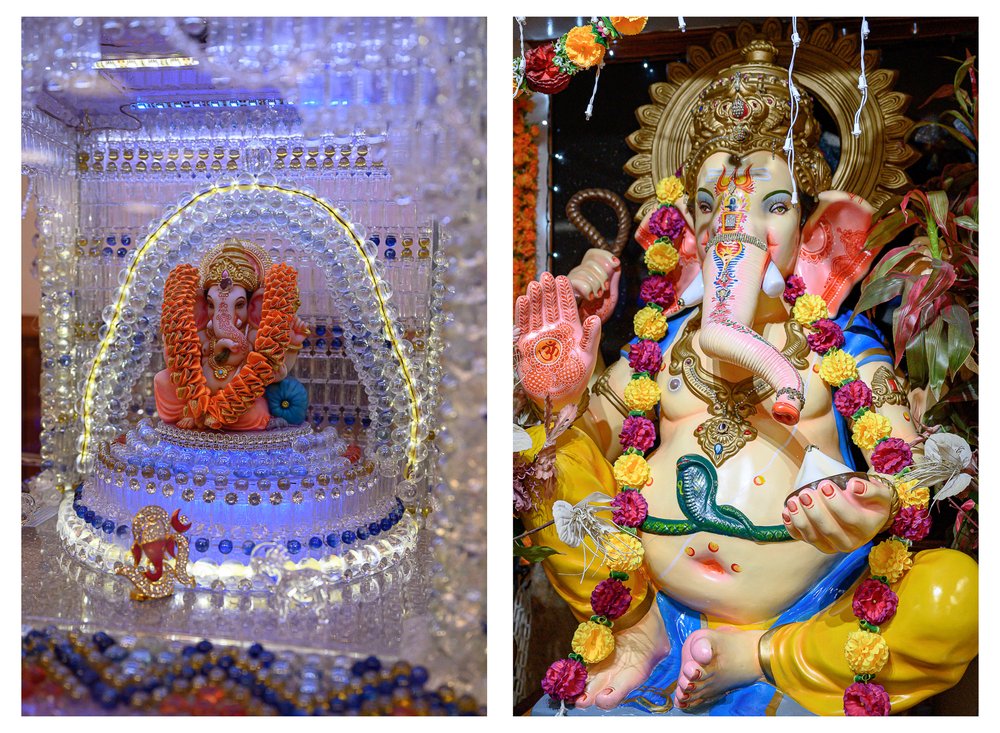Inside Flushing's Oldest Hindu Temple, Believed To Be The First In The U.S.
Nov. 6, 2019, 9:42 a.m.
Some devotees also refer to it as the Ganesh Temple, as Ganesh is the primary deity honored.
“We’re always busy,” Padmanabhan Ganapathy says with a smile. “There’s no time for God. Time for everything else, though.”
That does not actually seem to be a problem at the bustling Hindu Temple Society of North America in Queens, where Ganapathy has been the director of public relations for nearly 17 years. The temple and its related buildings take up most of a city block, and the main worship area was buzzing on a recent Saturday. Deities were ringed in flowers, and priests were performing rituals for small crowds of devotees. Meanwhile, the delicious, affordable basement cafeteria was packed with families sharing giant dosas.
The Hindu Temple Society opened more than four decades ago, and they say it is the first traditional Hindu temple in the United States.
The non-profit religious institution was incorporated on January 26th, 1970, under the laws of the State of New York. Soon thereafter, the Society acquired from a non-functioning Russian Orthodox Church, a site on which the present Temple is situated. It was in a small frame house that daily rituals were performed and weekend services conducted by volunteer priests, until the present structure, designed in accordance with the Agama Sastras (ancient scriptures relating to temple building), was completed early in 1977, and the Temple consecrated on July 4th of the same year—coinciding with the US Independence Day.
Some devotees also refer to it as the Ganesh Temple, as Ganesh is the primary deity honored, represented by a large and beautiful statue. Four times in the intervening decades, it’s been ritually re-consecrated and purified, a ceremony that will take place again in June 2020. The reason for the re-consecration is both prosaic and holy: because human beings make mistakes, puncturing the purity of the temple.
“To err is human,” explains Ganapathy with a grin.
The June re-consecration will be followed by the anniversary celebration of the temple, always a blowout bash, one of several that the Hindu Temple Society hosts. They also hold a 9-day festival for Ganesh, which gathers people from all over the world. At each Ganesh festival, a 16-foot tall silver chariot with silver horses is produced from a high-ceilinged garage where it’s kept year-round. With Ganesh safely inside, it’s pulled by a car through the neighborhood for several hours. Meanwhile, a ceremonial fire burns for all nine days. Hymns are chanted a total of 400,000 times, for the redemption of all humanity.

The inside of the temple is mostly one large open room, ringed with small statues of deities tucked into identical alcoves, while large freestanding temples house more prominent deities inside the room. There are areas to leave offerings, with many signs about how not to make a mess in the process. Separated at the far end of the building are deities in sealed decorative glass cases, while the other side is the area for lighting small diya oil lamps.
Another popular feature at the Hindu Temple Society are coconut offerings, which can be seen in their designated area. “Our ego can be likened to a coconut,” Ganapathy says. “If you break it, you find sweetness within.”
While the temple is a beautiful place to visit (we were able to do so during Open House NY), it’s also an active sacred space, and the rules are strict: photography inside the temple proper is forbidden, as are shorts, sleeveless tops, and other immodest dress, and shoes must be removed at the entrance. The vibe in the temple's vegetarian canteen—which feeds around 4,000 a week, 10,000 during Diwali season—is significantly more relaxed, with a large colorful statue of Ganesh watching the diners mixing among wall-mounted televisions and a gift shop. And the dosas are, again, absolutely delightful.